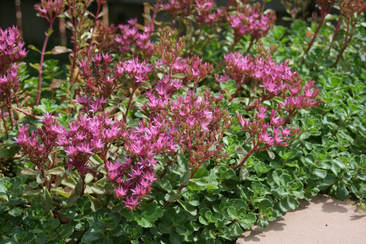 Dragon's Blood sedum Dragon's Blood sedum Sedum is an amazing ground cover that can survive in even the most-neglected areas. It's is an evergreen succulent perennial that grows 2 to 9 inches tall, and does well in both sun and partial shade. It does well even with just moderate watering—and actually too much water can kill them. These are great plants to put between pavers or in areas you want to break up the monotony of your turf. They also go well in beds, as accents, or as borders. There are dozens of varieties available, which offer eye-catching foliage and star-shaped blooms. Goldmoss stonecrop is a beautiful variety that has small, moss-like leaves and tiny flowers in the spring; it grows only a few inches tall but spreads up to two feet wide. The Dragon’s Blood variety grows a little taller than the goldmoss, and leaves turn a deep red in the cool temps of autumn; in summer the red flowers contrast beautifully with the green leaves. Whether you’re looking to fill in spaces in your yard or break up the monotony of your lawn, you really can’t go wrong with the evergreen sedum.
0 Comments
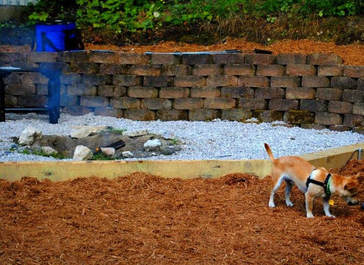 I’m a lawn guy, so naturally, my thoughts turn to grass when someone mentions “ground cover.” But that isn’t the only option. There are plenty of other options of living ground covers you could opt for your in yard: from overseeding some clover into your lawn all the way to including larger sections of ivy, hostas, vinca or even wild strawberries into the design. But what about inorganic ground cover? The use of wood mulch or pavers or crushed stone are legitimate ways to spruce up your yard, and they’re great ways to cut back on the use of fertilizer and water. Around the Good Sweet Earth homestead, we’ve opted for a couple alternative ground covers to make things a little more interesting: A large country garden filled in with red mulch in our front yard, and in the immediate are around our fire pit we’ve got crushed limestone, with more red mulch framing it in. The contrast between the green and red and white in these areas is beautiful in the summer. Using areas of non-living ground cover allow homeowners to create spaces of color, interesting patterns and textural and color contrasts. The red mulch we’ve placed in a fan-shape around our fire pit is a stunning contrast with the green grass in the summer. Same goes for the country garden in the front yard. Those areas also mean less grass to maintain, while keeping weeds to a minimum. So when deciding whether to go with a living or non-living ground cover, you should consider both design and function. For design: Non-living ground covers can help unify your landscape, just like plants can, while creating a nice contrast between spaces. Consider the lines you’ll create with non-living materials, and how it draws the eye around your yard. The fan-shaped area of mulch in our yard leading up to the fire pit sets the fire pit area as a focal point. Also, putting pavers in can definitely create eye movement around your yard, especially when installed as a pathway. For function: Consider foot traffic. Non-living ground covers do well in high-traffic areas. They can also help guide traffic (paver paths, for instance). A nice alternative to grass or plant would be square stepping stones surrounded by similarly-colored gravel; you could do something like this leading out to your garage or play area to cut back on grass upkeep, as well as keeping foot traffic off of the lawn itself. So once you’ve decided to add some non-living ground cover to your yard, do you go with organic (wood mulch) or inorganic material (stones)? Cost is one factor to consider. Stone materials cost more upfront, but it’s often a one-time cost. Woody materials cost less, but they’ll break down over time and you’ll need to buy more in a year or two. Location is another thing to consider. When putting a non-living ground cover right next to your house rocks will provide a less-hospitable living space for pests that may ultimately invade your home. A woody mulch that stays cool and damp often becomes home to little critters (like millipedes, earwigs, spiders), and they could make their way into your house, especially as the weather cools in the fall. Finally, when using non-living ground covers, try to find colors and textures that complement each other overall, and work well with your existing plants and style. Don’t mix things up too much—stick with one color mulch throughout your yard, stick with one type and color of stone throughout your yard, etc. Non-living ground covers are a great way to add areas of interest throughout your yard (and break up large chunks of greenspace), but they’re also good for the environment, as you’ll have less turf to water, fertilize and mow. 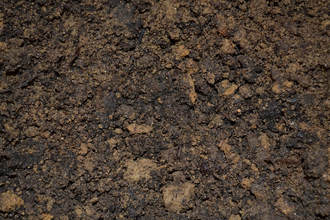 At Good Sweet Earth, we believe healthy soil is the key to a healthier—well, everything. It’s the key to producing healthier food, keeping our watersheds clean, giving us more breathable air, and even reducing the greenhouse gasses responsible for climate change. Reducing the amount of chemicals in the soil around our homes exposes us to less carcinogens, which is healthier for our families. Healthy soil provides a home to billions and billions of lifeforms, which are threatened when soil is tainted with chemical fertilizers and herbicides. And when soil is healthy, it helps prevent erosion. Soil is life. But what exactly does soil do? According to the Soil Science of America, they describe the basics of soil like this: Soil is an amazing substance. A complex mix of minerals, air, water, and countless microorganisms, soil forms at the surface of land and comes in many types. Put another way, soil is the thin, outermost layer of Earth’s crust, and like our own skin, we can’t live without soil. Why?
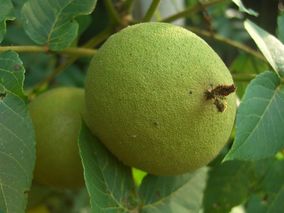 This past week I was talking with a woman about lawn care. As initial conversations with our customers often do, we started chatting about gardens. She asked if it is possible to have a garden near a black walnut tree. The answer: yes and no. Before moving to Zeeland we lived in Dearborn, Michigan on an urban lot (40 feet x 100 feet). Most of our backyard was garden and our neighbor directly behind us had a massive black walnut tree. I eventually learned that black walnut trees contain juglone and can be difficult, but not impossible to garden near. The Morton Arboretum explains juglone this way: “Black walnuts produce a chemical called juglone, which occurs naturally in all parts of the tree, especially in the buds, nut hulls, and roots. The leaves and stems contain smaller quantities of juglone, which is leached into the soil after they fall. The highest concentration of juglone occurs in the soil directly under the tree’s canopy, but highly sensitive plants may exhibit toxicity symptoms beyond the canopy drip line. Because decaying roots can release juglone, toxicity may occur for several years after a tree has been removed.” Ideally you would plan your garden as far away from a black walnut tree as possible. If your space simply doesn’t allow for that then use raised beds to combat some of the toxicity. Also ensure that your soil is full of nutrients so plants that do encounter the juglone have the best chance at health. Finally, avoid planting vegetables that are sensitive to juglone such as tomatoes, eggplant, asparagus, cabbage, and peppers. Instead plant vegetables known to tolerate juglone better such as beans, beets, carrots, melons, corn, leeks, onions, and squash. Now I know what you are thinking: what’s a backyard garden without tomatoes? For the health of your tomatoes consider a large pot and plant a variety of tomato suitable to container gardening. Happy gardening! 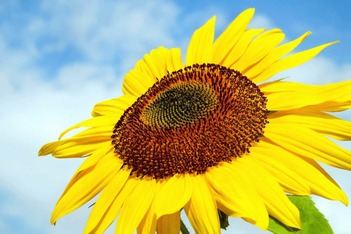 For most people, when they think about protein, they think meat. But there are plenty of vegan-friendly options for getting your protein, that you can grow right in your own garden. Here are some of our favorites with tips for growing and cooking from Melissa Halas-Liang, MA, RDN, CDE, dietitian and avid gardener (Source Rodale's Organic Life). I've included a scale detailing how easy (or hard) that plant is to grow for the average gardener (1 being very difficult, 5 being very easy): 1. Brocolli. One of our family's favs, but not necessarily easy to grow. Ease of growing: 2 Broccoli is a legit superfood. Not only does the cool-season crop deliver fiber and protein—1 cup has 2.5 grams of each—“it’s an excellent source of cancer-fighting phytonutrients and vitamin C for your immune system,” says Halas-Liang. (Here's exactly what to eat in a day to reduce your risk of cancer.) The florets are great in stirfries, pureed into soups, or eaten raw with dip—and you can turn the stems into slaw. To avoid mushy broccoli, don’t overcook it, warns Halas-Liang: “Cook until it’s tender and crisp and still bright green.” 2. Edamame. A perfect addition to stir-frys, or as a steamed snack. Ease of growing: 5 With all nine essential amino acids, it’s as close to animal protein as it gets; plus, a study in the International Journal of Obesitylinked soy protein to fat burning and weight loss. As well as delivering 10 grams protein per ½ cup, the green beans are rich in isoflavones and omega-3 fatty acids, inflammation-fighters linked to decreased heart attack risk and reduced symptoms of menopause. Add organic edamame to guacamole or hummus, mash into a toast topper, or eat straight up with a sprinkle of salt. 3. Asparagus. Don't start these from seed, as you can only harvest in the second year. Buy and plant one-year crowns. But once they're going, they're perennials, so you'll always have them. Ease of growing: 4 The spring spears contains 3 grams protein and 3 grams fiber per cup—all for a measly 27 calories. Asparagus also delivers a hefty dose of heart-healthy folate, and inulin to support digestion and healthy gut bacteria. “Asparagus is delicious shaved,” says Halas-Liang, who uses a vegetable peeler to turn it into ribbons for salads. It’s also tasty steamed, broiled, or sautéed. 4. Peas. Another favorite in our house, and very easy to grow. Ease of growing: 5 These glorious green pods that arrive in late spring are packed with protein (4 grams per ½ cup), as well as mood-boosting folate, heart-healthy fiber, and almost half of your vitamin C needs for the day...Toss snow peas or snap peas into stirfries and pastas, puree shelled garden peas into soups, or pair with mint in a salad. (Here's how to pre-sprout your peas to give them a head start and boost yields.) 5. Kale. Young leaves are good in salads, more mature leaves are great sauteed or in soups. Make sure to "massage" the leaves in your prep to make them less tough. Ease of growing: 5 When it comes to leafy greens, kale takes the protein prize, with more of the macronutrient than spinach, collards, and mustard greens—and double that of Swiss chard. One cup also delivers more than your daily dose of immune-boosting vitamin A and bone-building vitamin K. Plus, it’s a good source of calcium. Chop it into salads, puree it into pesto, bake it into kale chips, or try it on this ridiculously delicious kale and lemon pizza. 6. Sunflower seeds. A delicious snack. Sunflowers are relatively easy to grow, and they're a beautiful addition to your yard, but they're a direct sow; you can't start them and transplant them later. Ease of growing: 3 The glorious annual can stretch over 4 meters tall with a flower head 12 inches across, which is where the kernel comes from. As well as providing protein (¼ cup delivers 6 grams), the seeds are rich in linoleic acid, a polyunsaturated fat linked to weight loss. Plus, they’re a super source of vitamin E and selenium for gorgeous skin. Add sunflower seeds to oatmeal parfaits, cookies, muffins, salads, and pesto. Here's how to harvest sunflower seeds. |
